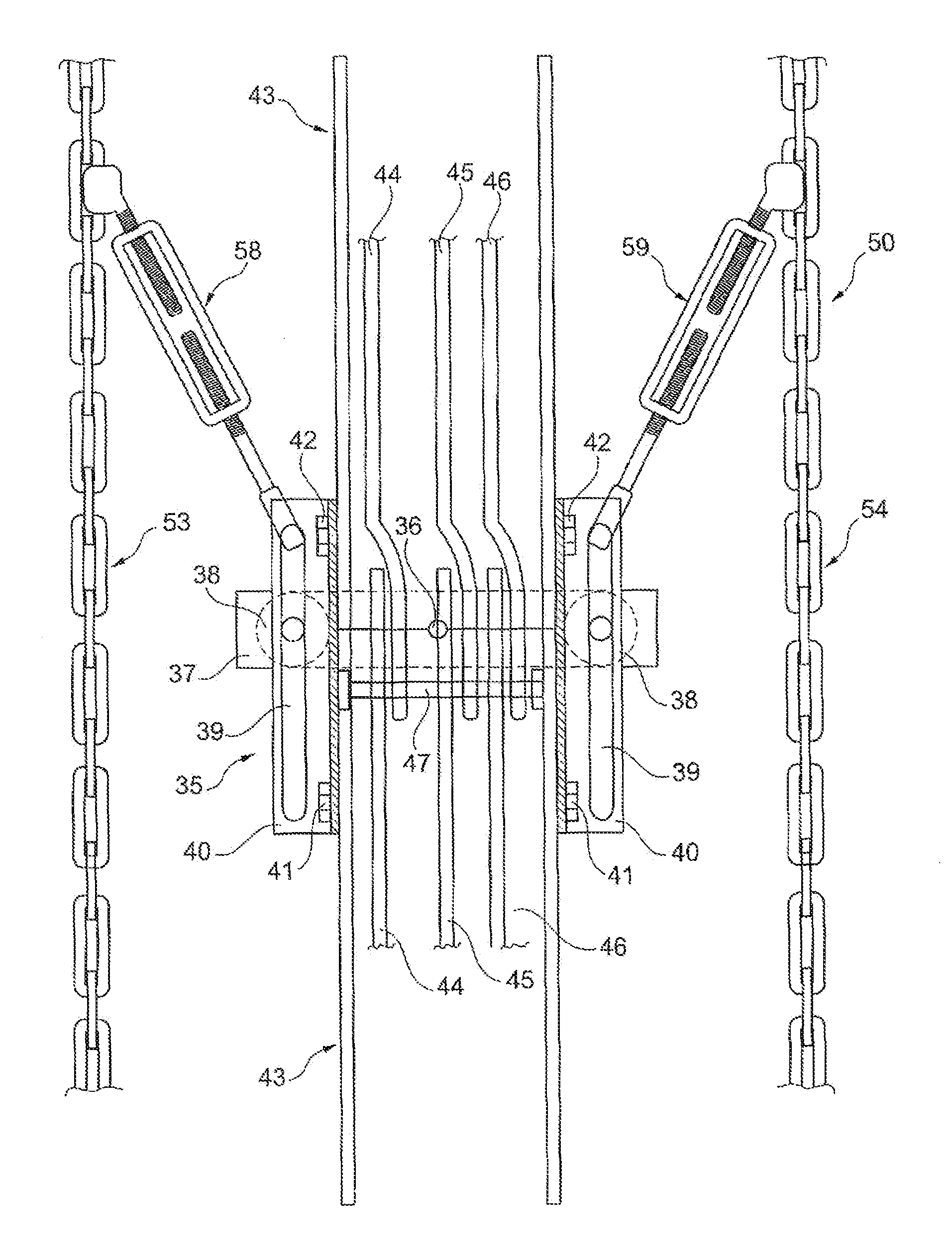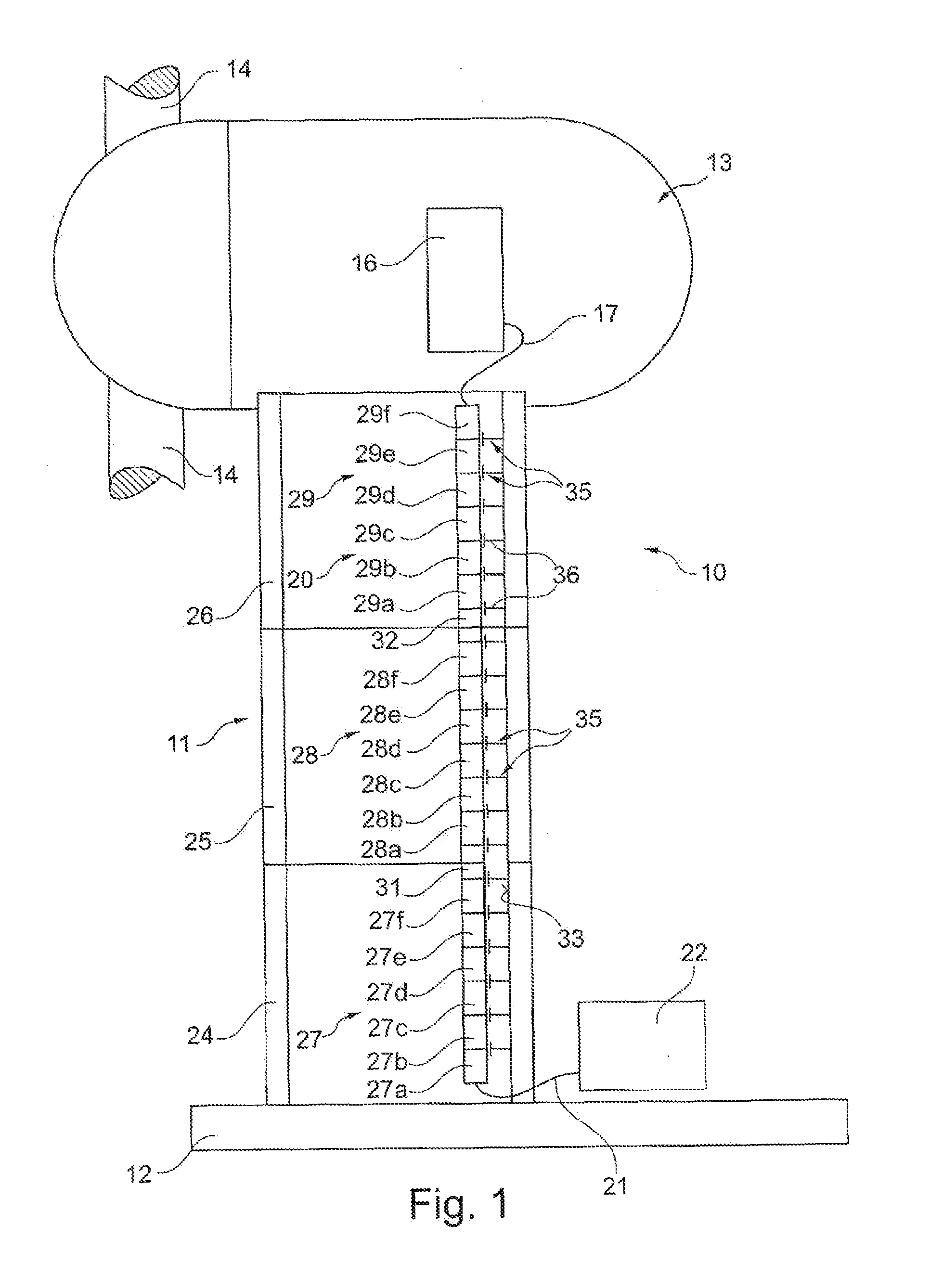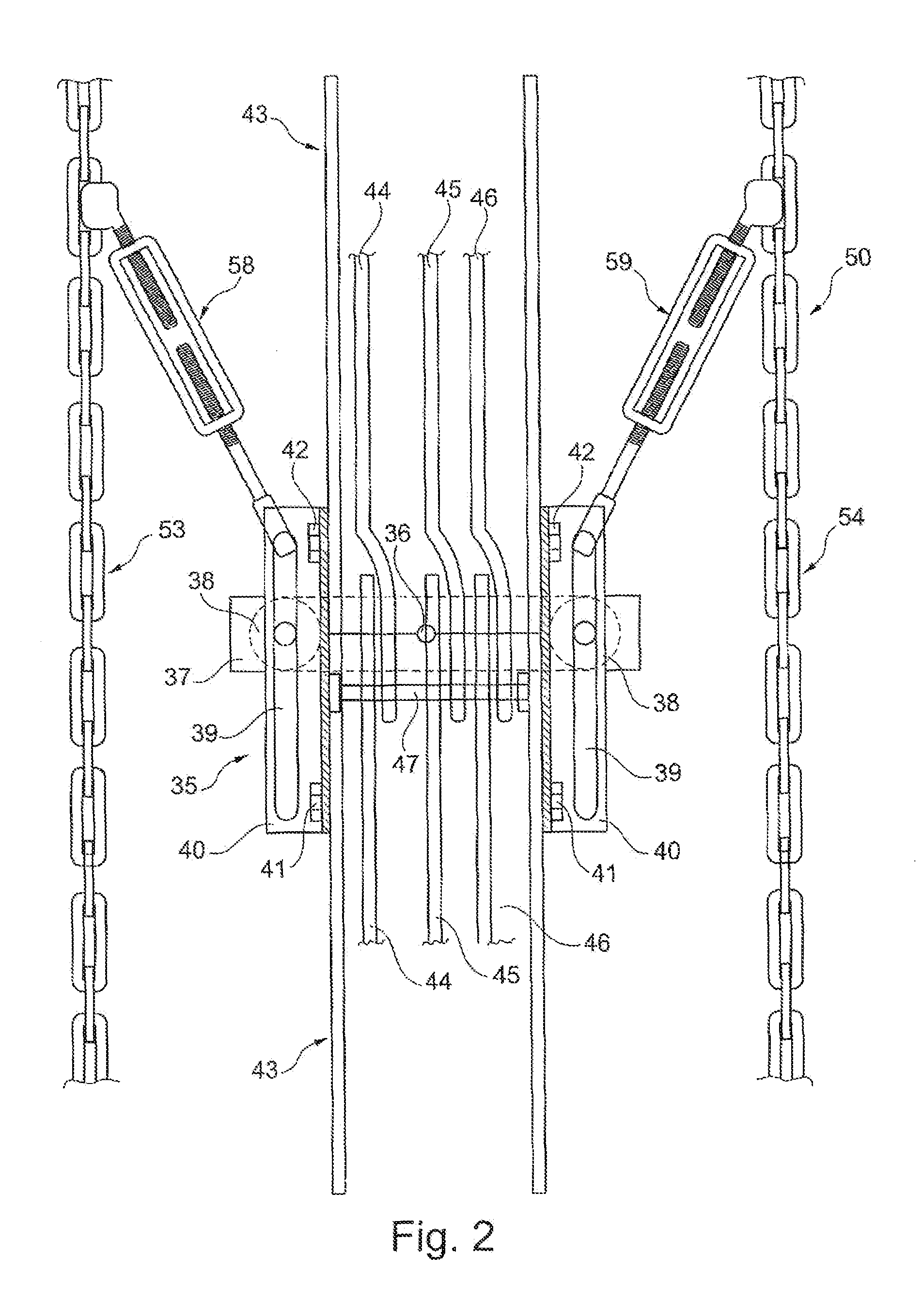Method and device for handling, in particular for repairing or replacing, busbars on wind power plants
a technology for wind power plants and busbars, applied in the direction of motors, wind energy generation, pile separation, etc., can solve the problems of preventing previously damaged elastomers of the relevant busbars, and inability to repair or replace them, so as to eliminate inherent stresses of all busbars and prevent the introduction of transverse forces
- Summary
- Abstract
- Description
- Claims
- Application Information
AI Technical Summary
Benefits of technology
Problems solved by technology
Method used
Image
Examples
Embodiment Construction
[0025]In FIG. 1 the basic structure of a wind power plant 10 is illustrated in a greatly simplified manner. The wind power plant 10 has a tower 11, which is arranged on a base 12. At the top of the tower 11a nacelle 13 is arranged, in which inter alia the rotor blades 14 are arranged in a rotatably movable manner. A generator 16 is situated within the nacelle 13. The generator 16 is coupled with an upper connecting line 17 or an upper connection with a busbar interconnection 20. The busbar interconnection 20 is arranged here in particular over the entire length or respectively height of the tower 11. In the region of the base 12 of the tower 11, the busbar interconnection 20 is connected by means of a further, lower connecting line 21 or respectively a lower connection with a substation 22.
[0026]The tower 11 consists for example of three respectively sleeve-like tower segments 24 to 26 arranged on top of one another. Such a tower segment 24 to 26 has here a typical length of approxi...
PUM
 Login to View More
Login to View More Abstract
Description
Claims
Application Information
 Login to View More
Login to View More - R&D
- Intellectual Property
- Life Sciences
- Materials
- Tech Scout
- Unparalleled Data Quality
- Higher Quality Content
- 60% Fewer Hallucinations
Browse by: Latest US Patents, China's latest patents, Technical Efficacy Thesaurus, Application Domain, Technology Topic, Popular Technical Reports.
© 2025 PatSnap. All rights reserved.Legal|Privacy policy|Modern Slavery Act Transparency Statement|Sitemap|About US| Contact US: help@patsnap.com



